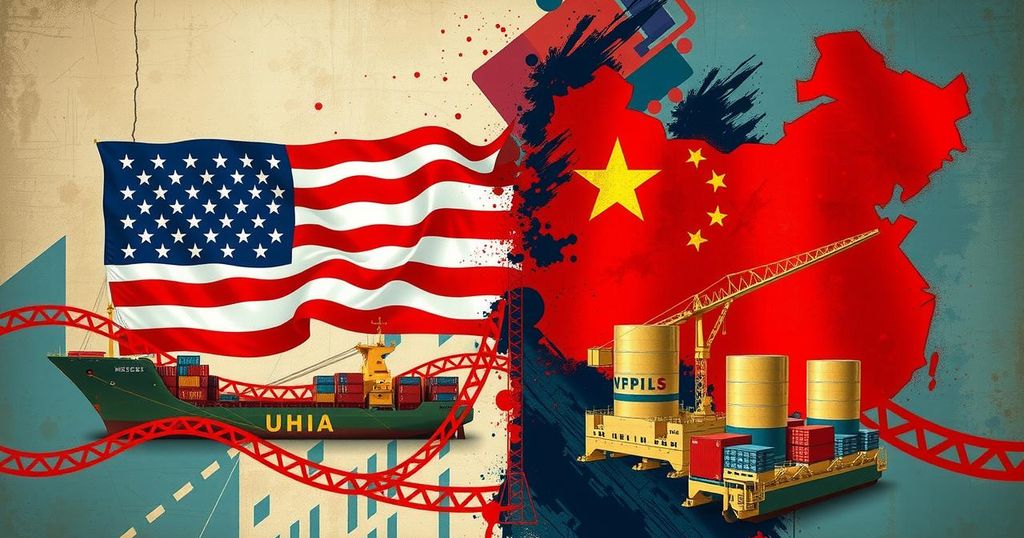The Intensifying U.S.-China Trade Conflict: Implications and Future Directions

Donald Trump’s trade war has increasingly targeted China, emphasizing a 125% tariff on Chinese goods due to its retaliatory stance. Trump aims to reshape trade dynamics, citing Chinese economic practices. The potential outcomes depend on China’s willingness to negotiate and the U.S. commitment to free trade principles, posing questions for the future of global economic relations.
Currently, the trade conflict between Donald Trump and China has intensified, with Trump focusing his efforts primarily on Beijing, which constitutes a significant portion of U.S. imports at approximately 14%. While other countries have a 10% tariff in place, Trump has implemented a steep 125% tariff on Chinese goods, citing retaliatory actions from China as justification. He noted this increase reflects a perceived “lack of respect” on Beijing’s part.
The relationship between the United States and China has deep roots, particularly for Trump, who campaigned on an anti-China platform. He expressed, “We didn’t have the time to do the right thing, which we’re doing now,” signifying an intention to address trade imbalances from his initial term. Trump’s ultimate goal is to disrupt a long-standing global trade framework reliant on China, favoring a more nationalist approach to trade.
Historically, many viewed increasing trade with China as advantageous, enhancing global growth and offering affordable goods while fostering a significant Chinese middle class. However, expectations that a wealthier China would seek political reform have not materialized; instead, the Communist Party’s influence has solidified, and the country remains export-dependent. The Chinese state’s ambitious economic initiative, “Made in China 2025,” reflects its aim to dominate various manufacturing sectors.
After Trump’s initial tariffs, both he and President Joe Biden maintained pressure on China, yet the fundamental economic model has not changed significantly. China now leads in electric vehicle production and battery manufacturing, indicating resilience despite U.S. tariffs.
As Trump escalates trade actions, the outcomes hinge on two pivotal questions: Will China agree to negotiate? If so, will it make substantial concessions regarding its export-driven economic model? As the U.S. navigates these discussions, experts express caution, acknowledging that the future is unpredictable.
China’s economic strategy emphasizes robust exports intertwined with its concept of national strength, making significant concessions challenging, especially in protecting domestic markets. Furthermore, the U.S. perspective on free trade is also crucial. Trump appears to advocate tariffs as beneficial on their own, potentially complicating negotiations if Beijing perceives the tariffs as an end rather than a means.
Ultimately, the trajectory of U.S.-China trade relations suggests a departure from the previous consensus on economic cooperation. If both nations descend into a struggle for economic dominance, it could represent a shift towards a more confrontational and precarious global landscape.
In summary, the trade dispute between Donald Trump and China has sharpened focus on the latter as a primary adversary in his administration’s trade strategy. The significant tariffs imposed signal a shift toward a potential long-term confrontation, reflecting both nations’ economic ideologies and aspirations. The outcomes hinge on negotiations, with complex consequences for global trade dynamics.
Original Source: www.bbc.com






